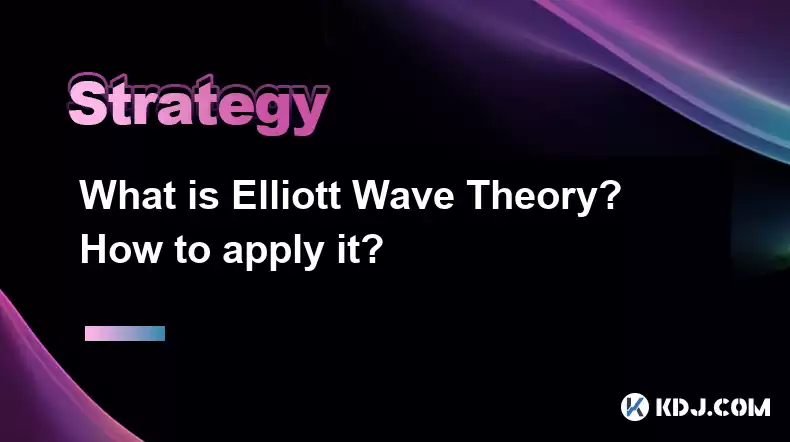-
 Bitcoin
Bitcoin $116400
-0.36% -
 Ethereum
Ethereum $4033
3.40% -
 XRP
XRP $3.302
-1.26% -
 Tether USDt
Tether USDt $1.000
-0.02% -
 BNB
BNB $796.1
1.67% -
 Solana
Solana $177.8
1.89% -
 USDC
USDC $0.9999
0.00% -
 Dogecoin
Dogecoin $0.2314
4.09% -
 TRON
TRON $0.3381
0.14% -
 Cardano
Cardano $0.7989
1.22% -
 Stellar
Stellar $0.4496
-1.84% -
 Chainlink
Chainlink $20.42
9.42% -
 Hyperliquid
Hyperliquid $41.17
0.88% -
 Sui
Sui $3.914
3.77% -
 Bitcoin Cash
Bitcoin Cash $584.7
1.52% -
 Hedera
Hedera $0.2632
-0.54% -
 Avalanche
Avalanche $24.09
3.40% -
 Ethena USDe
Ethena USDe $1.001
-0.02% -
 Litecoin
Litecoin $123.2
1.33% -
 Toncoin
Toncoin $3.318
-0.04% -
 UNUS SED LEO
UNUS SED LEO $8.984
-0.05% -
 Shiba Inu
Shiba Inu $0.00001323
2.85% -
 Uniswap
Uniswap $10.90
4.41% -
 Polkadot
Polkadot $3.999
3.34% -
 Dai
Dai $1.000
0.01% -
 Cronos
Cronos $0.1630
9.64% -
 Bitget Token
Bitget Token $4.484
0.82% -
 Monero
Monero $272.4
2.44% -
 Pepe
Pepe $0.00001173
6.03% -
 Aave
Aave $290.8
2.88%
What is Elliott Wave Theory? How to apply it?
Elliott Wave Theory proposes that price movements of financial markets follow predictable, fractal-like patterns, offering potential insights into trend prediction and target identification in cryptocurrency markets.
Feb 26, 2025 at 06:37 pm

Key Points:
- Provides an overview of Elliott Wave Theory (EWT)
- Explains the Wave Principle and its components
- Guides on identifying Elliott Waves in practice
- Highlights potential applications and limitations of EWT
- Discusses the Fibonacci sequence and its significance in EWT
- Addresses common pitfalls in using EWT
What is Elliott Wave Theory?
Elliott Wave Theory (EWT) is a technical analysis tool developed by Ralph Nelson Elliott in the 1930s. It proposes that the price movements of financial markets follow predictable patterns, known as Elliott Waves. These patterns repeat in a hierarchical manner, forming a fractal-like structure.
According to EWT, the trend of a financial instrument is driven by two opposing forces:
- Bullish Sentiment: Buyers drive prices higher, creating an uptrend.
- Bearish Sentiment: Sellers drive prices lower, creating a downtrend.
Elliott identified that these forces interact in specific sequences, forming distinct patterns that can be used to predict future price movements.
The Wave Principle
The Wave Principle, formulated by Elliott, forms the core of EWT. It states that price moves in a series of five waves in the direction of the trend, followed by three corrective waves in the opposite direction. This sequence repeats itself at different scales, from short-term fluctuations to long-term market trends.
The five motive waves (uptrend) are labeled 1, 2, 3, 4, and 5. The three corrective waves (downtrend) are labeled A, B, and C.
Applying Elliott Wave Theory
Identifying Elliott Waves in practice requires a comprehensive understanding of the Wave Principle. It involves:
- Wave Counting: Identifying the individual waves within a sequence.
- Wave Characteristics: Analyzing the shape, duration, and relationship between waves.
- Fibonacci Ratios: Applying specific Fibonacci ratios to determine potential support and resistance levels.
Potential Applications of EWT
EWT can potentially be applied in various ways in the cryptocurrency market:
- Trend Prediction: Identifying potential reversal points.
- Target Identification: Determining price targets for trades.
- Profit Optimization: Maximizing profits by trading in line with Elliott Wave patterns.
Limitations of EWT
While Elliott Wave Theory can be a valuable tool, it's essential to acknowledge its limitations:
- Subjective Interpretation: Identifying Elliott Waves can be subjective, leading to different interpretations.
- Historical Data Fit: EWT often relies on historical data to validate patterns, which may not always predict future movements accurately.
- Complex Analysis: Mastering EWT requires a thorough understanding of the wave principle and its intricacies.
Fibonacci Sequence and EWT
The Fibonacci Sequence, a series of numbers where each number is the sum of the two preceding ones, plays a significant role in EWT. It underlies the ratios used to determine potential support and resistance levels within Elliott Wave patterns.
Pitfalls in Using EWT
Common pitfalls to avoid when using Elliott Wave Theory include:
- Overfitting: Force-fitting price movements into predefined patterns.
- Selective Data: Focusing only on patterns that confirm a trader's bias.
- Emotional Trading: Making trading decisions solely based on Elliott Waves without proper risk management.
FAQs:
Q: How do you identify the start of an Elliott Wave pattern?
A: Identify a clear impulsive move and its subsequent corrective wave.
Q: Can Elliott Wave Theory be used for all cryptocurrencies?
A: Yes, EWT can be applied to any financial instrument, including cryptocurrencies.
Q: How accurate is Elliott Wave Theory in predicting price movements?
A: EWT's accuracy can vary, and its effectiveness depends on the trader's skill and market conditions.
Q: Does Elliott Wave Theory predict the duration of a wave?
A: Not explicitly. However, it suggests that waves can exhibit certain time fractals.
Q: Are there any software tools to assist in Elliott Wave analysis?
A: Yes, various technical analysis platforms offer features to aid in wave counting and identification.
Disclaimer:info@kdj.com
The information provided is not trading advice. kdj.com does not assume any responsibility for any investments made based on the information provided in this article. Cryptocurrencies are highly volatile and it is highly recommended that you invest with caution after thorough research!
If you believe that the content used on this website infringes your copyright, please contact us immediately (info@kdj.com) and we will delete it promptly.
- Decentralized Data: Taking the Driver's Seat in the Data Economy
- 2025-08-09 14:30:11
- Bitcoin vs. Gold: The Store-of-Value Showdown in the Digital Age
- 2025-08-09 14:30:11
- BlockDAG, Stellar, and Crypto Adoption: Navigating the Hype
- 2025-08-09 14:50:12
- Litecoin Price Surge: Riding the Wave of Institutional Interest and ETF Hopes
- 2025-08-09 14:50:12
- Chainlink's Wild Ride: Whales Are Still Loading Up on LINK!
- 2025-08-09 15:10:11
- Ruvi AI: Solana's New Challenger Dominating Token Sales with AI Innovation
- 2025-08-09 14:55:15
Related knowledge

How to use stop-loss orders to limit potential losses?
Aug 08,2025 at 02:01pm
Understanding Stop-Loss Orders in Cryptocurrency TradingA stop-loss order is a risk management tool used by traders to automatically sell a cryptocurr...

How to read cryptocurrency charts and use technical analysis?
Aug 08,2025 at 11:08am
Understanding the Basics of Cryptocurrency ChartsCryptocurrency charts are graphical representations of price movements over time. These charts are es...

How to do your own research (DYOR) before investing in a crypto project?
Aug 08,2025 at 09:07pm
Understanding the Core Principles of DYOR in CryptocurrencyEngaging in due diligence before investing in any cryptocurrency project is essential to mi...

How to build a diversified crypto portfolio?
Aug 09,2025 at 12:21pm
Understanding the Importance of Diversification in CryptoDiversification in the cryptocurrency space is a strategy used to reduce risk by spreading in...

How to avoid common crypto investment mistakes?
Jul 13,2025 at 01:35am
Understanding the Risks of Crypto InvestmentInvesting in cryptocurrency can be highly rewarding, but it also comes with significant risks. One of the ...

What is a long-short crypto strategy?
Jul 15,2025 at 10:56am
Understanding the Basics of a Long-Short Crypto StrategyA long-short crypto strategy is an investment approach where traders simultaneously take long ...

How to use stop-loss orders to limit potential losses?
Aug 08,2025 at 02:01pm
Understanding Stop-Loss Orders in Cryptocurrency TradingA stop-loss order is a risk management tool used by traders to automatically sell a cryptocurr...

How to read cryptocurrency charts and use technical analysis?
Aug 08,2025 at 11:08am
Understanding the Basics of Cryptocurrency ChartsCryptocurrency charts are graphical representations of price movements over time. These charts are es...

How to do your own research (DYOR) before investing in a crypto project?
Aug 08,2025 at 09:07pm
Understanding the Core Principles of DYOR in CryptocurrencyEngaging in due diligence before investing in any cryptocurrency project is essential to mi...

How to build a diversified crypto portfolio?
Aug 09,2025 at 12:21pm
Understanding the Importance of Diversification in CryptoDiversification in the cryptocurrency space is a strategy used to reduce risk by spreading in...

How to avoid common crypto investment mistakes?
Jul 13,2025 at 01:35am
Understanding the Risks of Crypto InvestmentInvesting in cryptocurrency can be highly rewarding, but it also comes with significant risks. One of the ...

What is a long-short crypto strategy?
Jul 15,2025 at 10:56am
Understanding the Basics of a Long-Short Crypto StrategyA long-short crypto strategy is an investment approach where traders simultaneously take long ...
See all articles

























































































